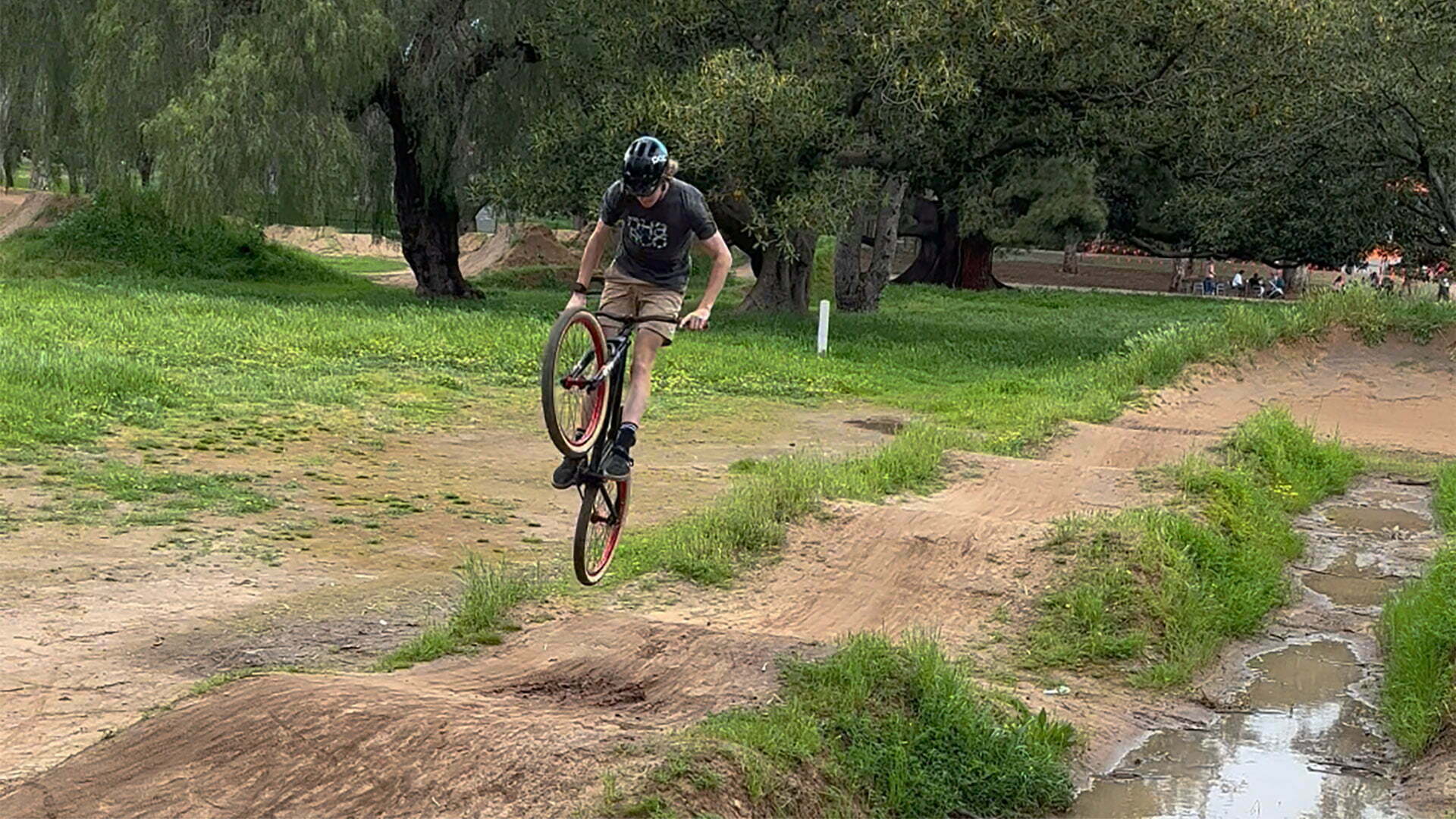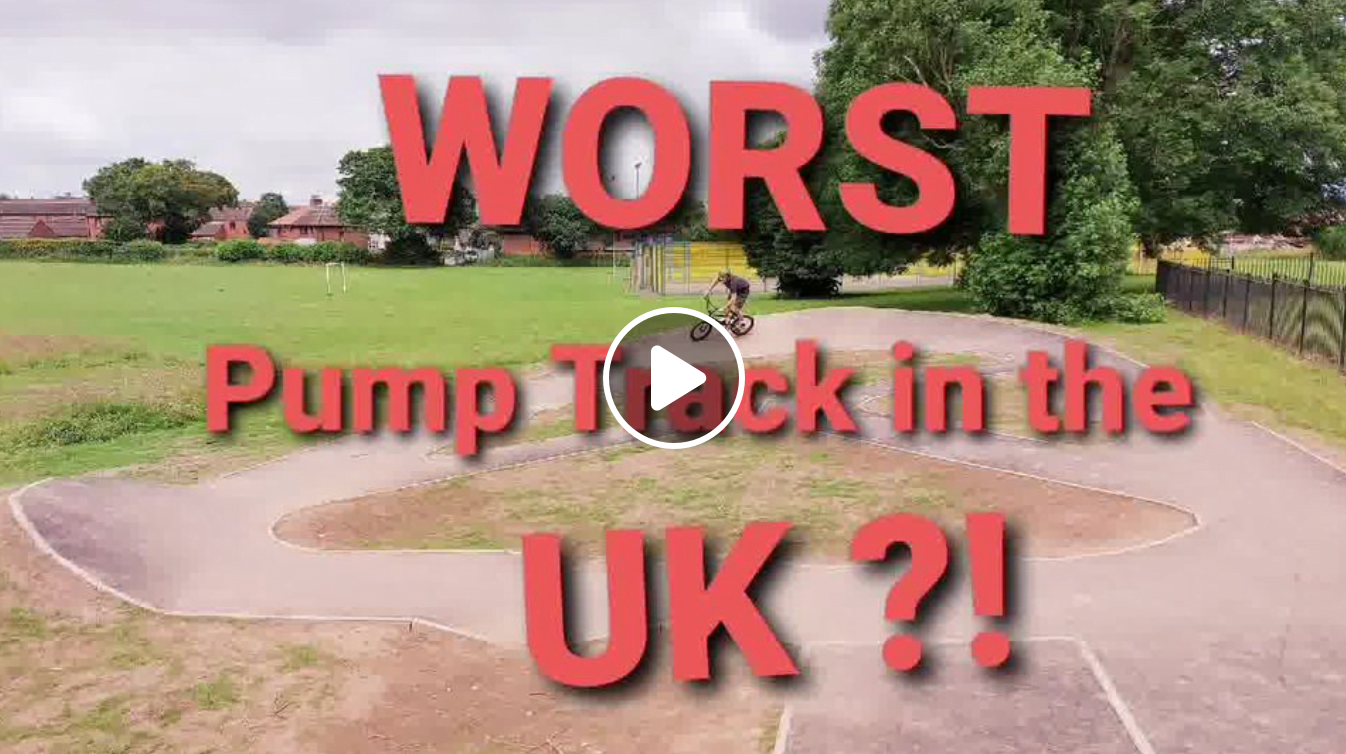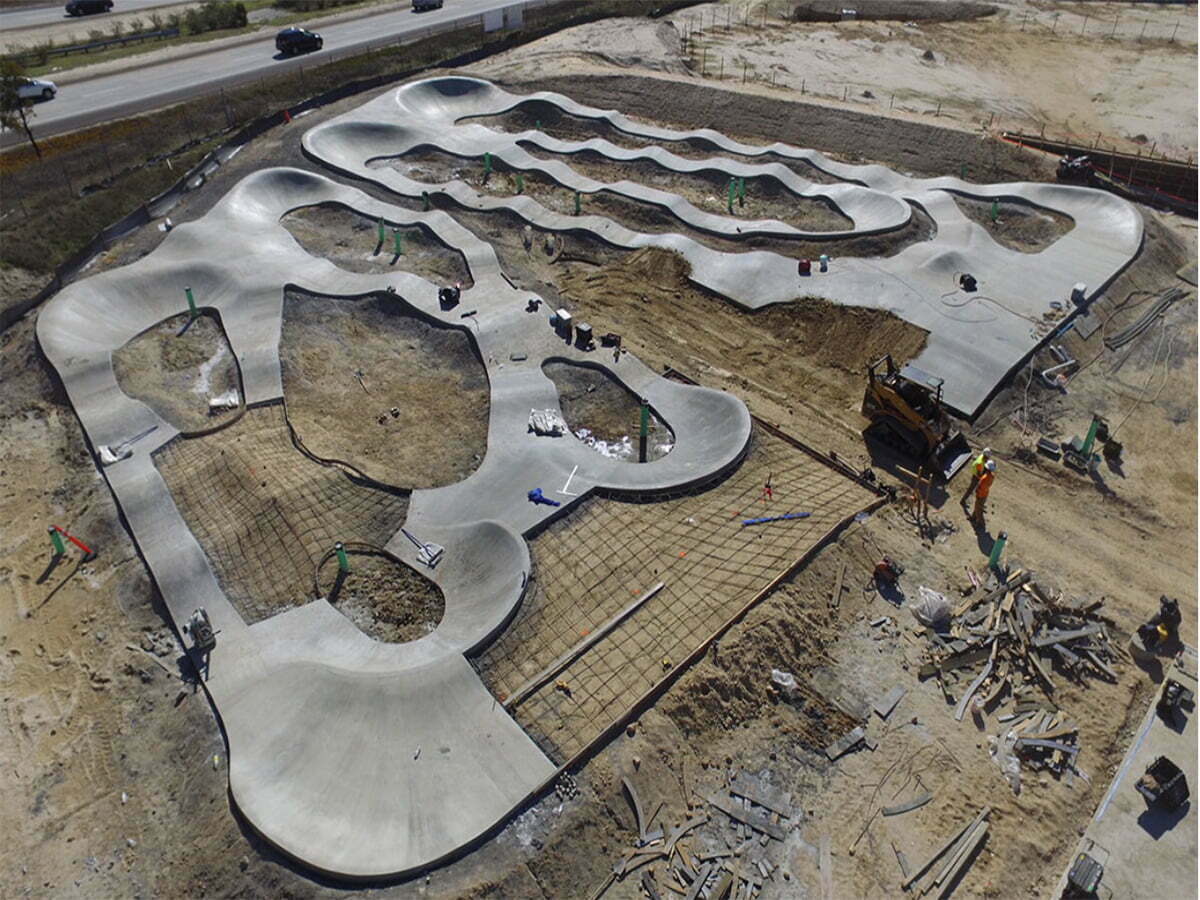We all love a bargain, but cutting corners on your pump track could cost you more in maintenance and may even be a safety hazard and an expensive liability.
Pump track design has come a long way since kids started digging at their local hidden riding spot to build dirt jumps and pump tracks.
As more local councils and holiday park owners realise the popularity of pump tracks with people of all ages, it’s even more important to understand that not all pump tracks are created equal.
A badly designed pump track can be deeply disappointing for a community
In this video from Carlyle in the UK, a local resident explains his disappointment with the new pump track in his local area.
“For the local community and for everyone within the city who’s been waiting for a cool facility to use, it’s just really sad.”
Originally promised a BMX pump track, the poorly designed and cheaply built pump track already started to deteriorate soon after installation. Having been funded by community fundraising and a local grant, Steve Wilson considers the pump track to be a waste of money and a missed opportunity.
Is This The Worst Pump Track in the UK?
More on this story by Singletrack World here
From New Zealand, we heard of another example of a pump track which received scathing reviews from the local community.
Built in 2017, Nic Scott discusses the pump track at Waterview in Auckland which has proven far too challenging for riders of all ages.
“You can’t even roll over it, which kind of defeats the point. It’s a nice idea, but a little bit of a poor execution.”
Top 3 pump track mistakes – and how to avoid them
Pump Track Mistake Number 1: Poor design makes a pump track not ‘fit for purpose’
Good pump track design is everything.
To the untrained eye, a pump track might look like something that’s easy to design. A few bumps and corners, and there you have it!
But to work well, a pump track needs to be designed with careful attention to its precise geometry.
The berms are the turns in the track. Berms are designed with a specific radius and carefully configured to allow the rider to keep momentum.
Ryan Gilchrist is one of Australia’s leading Gravity Enduro riders. A pump track racing champion and Parkitect’s Ambassador, Ryan gave us his thoughts on pump track design and the factors that can ruin the riding experience.
“Pump tracks that don’t have sufficiently steep or supportive berms often lead to no speed being carried through the pump track. This is because instead of pumping through the corner, the rider needs to brake and lose speed.”
The bumps in the track are known as the rollers. Rollers are designed to create the momentum, using a specific ratio of length.
According to Ryan: “Not all rollers are created equal. It’s a surprisingly complex art to make rollers that flow. If there’s no room for the wheelbase of a bike to fit between the rollers, it won’t flow or be pleasant to ride. The same can apply for rollers that are too flat and boring. There’s no backside and the track is neither playful nor enjoyable.”
Having installed more than five hundred playspace projects around New Zealand, landscape architect and Park-Life owner Cameron Rennie knows what it takes to make a pump track project work.
“Over the years, I’ve seen how council projects get bogged down trying to design and build bespoke pump tracks. Not only were tracks a challenge to build, sometimes the track was simply not fit for purpose.”
In this video, you can see how a pump track works.
Pump Track Mistake Number 2: Building your pump track with ‘perceived cheap’ materials
Dirt pump tracks
Dirt is dirt cheap, right?
Traditionally, many pump tracks were made of dirt. But building a dirt pump track can be fraught with problems.
The main issue is the need for constant maintenance to prevent track deterioration due to the weather and usage wear and tear. A poorly designed and maintained dirt track can be dangerous to riders as weeds grow around it and the track becomes loose.
The quality of the dirt itself is important. You’ll want to make sure it’s uncontaminated and not full of rocks or other solid material.
Another drawback of dirt pump tracks is that they can only be ridden by bikes, so they’re not as versatile as pump tracks made of other materials. Not only that, if the riders don’t like the design, they’ll bring their own shovels and change it. And that can be a real liability issue for local councils.
In situ concrete pump tracks
Concrete is also a popular and a readily available material used for pump tracks.
However, concrete pump tracks tend to be costly, and need more planning time and skill to install. Using inexperienced builders may result in poor design geometry and this can make the track unsafe and difficult to ride.
Building a concrete track usually requires significant earthworks and skilled formwork. And because it’s a more permanent material, you’ll want to make sure your design works.
Then there’s the questionable environmental value of using concrete for your pump track, the time on site, the mess, and the impact of all this on the neigbourhood.
Asphalt pump tracks
The advantages of building an asphalt pump track are that they’re durable and probably needs less maintenance than a dirt track.
The downsides are they require considerable design and planning. This may involve an extensive amount of site works and a longer, messier onsite build which calls for specialised labour to create the perfect geometry.
Asphalt pump tracks also need more space and have a bigger visual impact on the surrounding environment.
For younger, inexperienced riders, asphalt tracks can appear more intimidating. Because of their design, they encourage lots of cross overs, where kids ride from one side of the track to the other in various directions. If there are too many riders on the track, there’s a greater risk of collision. [Aussie Crasher explains at 3:10 of this video from the Darra Pump Track in Queensland]
Pump Track Mistake Number 3: Building a pump track that doesn’t suit the target audience
We’ve already covered some of the issues with ill-designed pump tracks that don’t meet the needs of riders.
But building a community pump track that simply doesn’t suit a wide range of ages and skill levels is one of the biggest mistakes we’ve seen.
Limiting your playspace appeal to only one group of people – teenagers on skateboards or bike-riding beginners, for example – is a missed opportunity.
For example this Mount Albert, New Zealand resident Chris Graham explains how he planned on taking his kids for a ride in the park but said it [the pump track] was too advanced for them.
“It seems like it’s for a more experienced bike riding group,” Graham said.
Graham said the concrete pump track looked easier than it was.
Of course, there are other considerations – like making sure your pump track is easy to install, easy to maintain, and resistant to damage and natural wear and tear. More on that below.
How to avoid grand disasters for your community pump track
After years of working with our clients, we’ve come up with an easy four-step process for creating a pump track with a proven design that works for you and your community.
You can review our 4-step process here.
As with all things, good planning is a great place to start. Before the first shovel of dirt, we recommend you ask yourself these simple questions.
- Are you addressing the needs of the local community and visitors to the area? What age groups and skillsets do you need to cater for?
- Will the new facility be suitable for all wheels? (That’s bikes, scooters, and skateboards)
- How will the pump track work within its immediate environment? For example, take note of whether there are trees or other pieces of play equipment nearby. What about seating for parents or carers?
- How much area do you need and what’s the ground surface like?
- Do you need a permanent or mobile pump track solution?
- What’s your budget? Will a pre-engineered pump track suit your project better? (This can help you save money on design consulting fees and may mean you can spend the money you saved on installing a bigger track.)
- If you need to keep costs down, do you have your own team to assemble the track?
- What’s your timeframe for installing the new track?
Great design is built-in with Parkitect Modular Pumptracks
We think that designing a great pump track is both a science and an art.
When you choose a Parkitect Modular Pumptrack, great pump track design is ‘built-in’. We take the guesswork out of creating the best pump track for your needs.
Our distinctive pre-engineered, certified Modular Pumptrack design, significantly reduces the time (and cost) it takes to produce a guaranteed ridable result, for all seasons.
Made of either precast concrete, fibreglass, or composite, all pump track designs meet the latest Australian Standard AS EN14974:2021.
Originally founded by Canadian pro-rider and track consultant Erik Burgon in 2006, Parkitect have delivered Modular Pumptracks to more than 900 locations in forty countries around the world.
Here in Australia, we’ve seen our Modular Pumptracks assembled all over the country – from Wilcannia to Tibooburra, in inner city parks to outback regional locations. Check out more locations here.
Want to know more about how we can help create your perfect pump track and avoid regrets of building one that doesn’t work?
Contact Shaun on ride@parkitect.com.au






